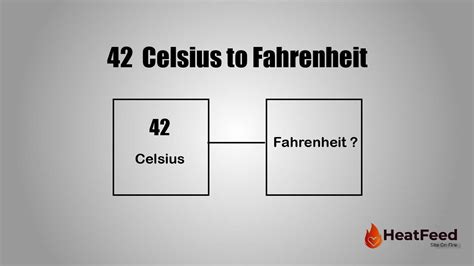How Much Is 42 Degrees Fahrenheit In Centigrade Celsius
Kalali
Mar 31, 2025 · 5 min read

Table of Contents
How Much is 42 Degrees Fahrenheit in Centigrade (Celsius)? A Comprehensive Guide
The simple answer is: 42 degrees Fahrenheit is equal to 5.56 degrees Celsius. But this seemingly straightforward conversion hides a wealth of information about temperature scales, their history, and their practical applications. This article will delve deep into this conversion, exploring the underlying formulas, the history of both Fahrenheit and Celsius scales, and various applications where understanding this conversion is crucial.
Understanding Temperature Scales: Fahrenheit vs. Celsius
Before we jump into the conversion, let's understand the two scales involved. Both Fahrenheit (°F) and Celsius (°C), also known as centigrade, are scales used to measure temperature, but they differ significantly in their reference points.
Fahrenheit (°F)
The Fahrenheit scale, developed by Daniel Gabriel Fahrenheit in 1724, uses the freezing point of a brine solution (a mixture of water, ice, and ammonium chloride) as its zero point (0°F) and the average human body temperature as approximately 96°F. Later adjustments established the freezing point of water at 32°F and the boiling point of water at 212°F at standard atmospheric pressure.
Celsius (°C)
The Celsius scale, also known as the centigrade scale, was developed by Anders Celsius in 1742. This scale defines 0°C as the freezing point of water and 100°C as the boiling point of water, both at standard atmospheric pressure. This creates a more intuitive and easily divisible scale compared to Fahrenheit.
The Conversion Formula: Fahrenheit to Celsius
The conversion from Fahrenheit to Celsius is governed by a straightforward formula:
°C = (°F - 32) × 5/9
Let's apply this formula to our specific case:
°C = (42°F - 32) × 5/9 = 10 × 5/9 = 50/9 ≈ 5.56°C
Therefore, 42 degrees Fahrenheit is approximately 5.56 degrees Celsius.
Practical Applications of the Conversion
Understanding the conversion between Fahrenheit and Celsius is essential in numerous fields. Here are some examples:
Meteorology and Climate Science
Meteorological reports often present temperature data in both Fahrenheit and Celsius. Converting between these scales allows for easy comprehension across different regions and audiences. Climate scientists rely on this conversion to compare and analyze global temperature data, identifying trends and patterns crucial for understanding climate change. Accurate conversion is crucial for interpreting climate models and projections.
Cooking and Food Science
Recipes from different countries might use different temperature scales. Accurate conversion is vital for successful baking and cooking, ensuring that the final product meets the desired consistency and quality. Understanding temperature changes in food preparation is crucial for food safety, preventing bacterial growth.
Medicine and Healthcare
Body temperature is often measured in both Fahrenheit and Celsius, depending on the region and medical device. Accurate conversion is crucial for proper diagnosis and treatment. Understanding temperature changes can be vital for monitoring patients with fevers or hypothermia.
Engineering and Industrial Processes
Many industrial processes involve precise temperature control, requiring accurate conversion between Fahrenheit and Celsius. Manufacturing, chemical engineering, and material science often rely on precise temperature measurements for optimal outcomes. Equipment calibrations and process control systems need consistent temperature data regardless of the chosen scale.
Everyday Life
While most people in some countries may be comfortable with one scale, understanding both allows for better communication and understanding across cultural boundaries. Reading international weather reports, understanding instructions on imported goods, or traveling to countries that use a different scale necessitates the ability to convert between Fahrenheit and Celsius.
History and Evolution of Temperature Scales
The development of temperature scales wasn't a simple, one-step process. It involved years of experimentation, refinement, and standardization. The choice of 0 and 100 degrees in Celsius are based on the easily reproducible phases of water (freezing and boiling), making it a more logical and scientific standard than Fahrenheit's arbitrary points. However, Fahrenheit’s scale still holds importance due to its widespread historical use, especially in the United States.
Beyond the Basics: Considering Pressure and Other Factors
The conversion formula provided earlier is accurate under standard atmospheric pressure. At higher altitudes or under different pressure conditions, the boiling and freezing points of water can vary slightly. This means that the conversion might require slight adjustments for highly precise applications. For most everyday purposes, the basic formula is sufficiently accurate.
Using Online Converters and Calculators
Numerous online converters and calculators are available for quick and easy temperature conversions. These tools eliminate the need for manual calculation and offer a convenient solution for immediate conversions between Fahrenheit and Celsius, or any other temperature scales. Always double-check the results from such online tools with manual calculations to avoid potential errors.
Conclusion: The Significance of Accurate Temperature Conversion
The conversion from 42°F to 5.56°C highlights the importance of understanding and correctly applying the conversion formula. Accuracy in temperature measurement and conversion is crucial across various fields, from scientific research to everyday life. While seemingly a simple mathematical operation, the conversion process involves a deeper understanding of the history, development, and application of temperature scales, making it a significant concept in multiple disciplines. The ability to perform this conversion smoothly ensures clear communication, accurate data analysis, and successful outcomes in countless situations. The widespread adoption of Celsius in much of the world demonstrates the practicality and efficiency of a system grounded in easily reproducible physical phenomena, compared to the more arbitrary origins of the Fahrenheit system. However, the persistence of both systems reflects the enduring complexity of scientific progress and the ongoing adaptation of conventions within different societies.
Latest Posts
Related Post
Thank you for visiting our website which covers about How Much Is 42 Degrees Fahrenheit In Centigrade Celsius . We hope the information provided has been useful to you. Feel free to contact us if you have any questions or need further assistance. See you next time and don't miss to bookmark.
